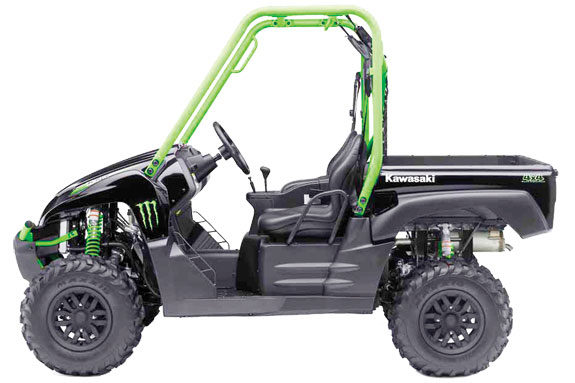Utility type vehicles are prominent pieces of equipment utilized in a variety of settings, including on dairies. The hauling features offered by UTVs have increased their popularity, availability and use in agricultural work-related tasks. To be clear, there is also a category of vehicles related to UTVs, with similar features and appearance, which is designed primarily for recreational use. These are known as recreational off-highway vehicles (ROVs). Both UTVs and ROVs have also been referred to as “side-by-side” vehicles.
Description of UTV
These vehicles can have four or six wheels and are powered by diesel, gasoline engines, electric or a hydrogen fuel cell. UTVs were designed for work purposes.
Most models include a bed to enable the hauling of feed or other supplies, which makes them convenient transport for small jobs. These utility type vehicles are available from multiple manufacturers and in a variety of models.
Utility type vehicles have a steering wheel, acceleration foot pedal and a brake foot pedal. In addition, these vehicles are designed to carry passengers. Most UTVs have side-by-side or bench seating and are equipped with a seat belt for the operator and passenger.
An occupant protective structure, which commonly includes a system of tubular bars, surrounds the space where the operator and/or passenger are seated. Other protective features could include hard plastic doors, sturdy canvas netting or handholds.
Utility type vehicles by design are to be “driven” while ATVs are to be “ridden.”
Safe operation
To safely operate a utility type vehicle, the operator must use similar safe work habits as used with tractors, skid steer loaders and ATVs. A safe, successful driver should become familiar with the machine before using it. This can be done by reading the owner’s manual and following safety labels found on the vehicle. A qualified operator can also demonstrate the correct operation.
Here are additional safety practices to follow when driving a UTV:
• Keep legs and arms inside the vehicle at all times.
• Drive slowly and turn smoothly to avoid an overturn. When hauling cargo, the vehicle’s center of gravity is raised, increasing the chance of overturning.
• Drive completely up or down a slope or hill before making a turn. Do not turn the vehicle in mid-slope or hill, as this increases the probability of overturning.
• Use the appropriate speed on rough terrain. Operators and passengers have been thrown from vehicles.
• Stay clear of ditches and embankments.
• Passengers must be tall enough to reach handhold while their backs are against the seat and their feet are flat on the floorboards.
• Each passenger must ride in his/her own seat, not anywhere else on the UTV.
• Operators must back up carefully. Look especially for children before backing.
• Operators should be free from the influence of drugs or alcohol.
• Due to the hauling purpose of a UTV, special attention should be paid to making sure cargo or material is properly secured during transport.
Since UTVs are often used to tow implements, it is important to follow safety practices when towing a load. When towing a load, make sure the cargo box is loaded to assume good traction for driving and stopping.
Be sure to tow a load at a speed slow enough to maintain control. Remember, the stopping distance increases with speed and weight of a towed load. Follow the manufacturer’s recommendations for weight limits for towed equipment.
The safety practices, listed above, are recommendations of how to safely operate a UTV. As with all machinery, use the UTV as designed. Utility vehicles are tools, not toys and following the recommended safety practices will help ensure an enjoyable experience for both driver and passenger. PD
Contributed by S. Dee Jepsen, assistant professor and state agricultural safety leader, and Kathy Henwood, program assistant. Both are faculty members in Ohio State University’s Agricultural Safety and Health Program.
—Excerpts from Ohio State University Extension fact sheet






